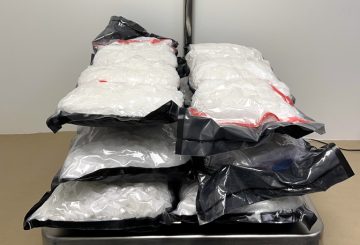Theo Colin Bond, người đứng đầu New Zealand người trồng Kiwi ở New Zealand, những người nông dân trồng kiwi ở New Zealand đang bắt đầu mùa vụ của họ với tốc độ cao. Ông nói rằng mặc dù một số trang trại vẫn phục hồi sau cơn bão Gabrielle, hầu hết dự kiến sẽ tạo ra lợi nhuận trong mùa thu hoạch này.
Zespri, một công ty lớn về quả kiwi, đã công bố dự báo cho vụ thu hoạch hiện tại. Các dự đoán cho thấy sự gia tăng đáng kể so với năm ngoái, khi một đợt sương giá bất ngờ làm hỏng hoa và quả non, khiến nhiều người trồng bị mất tiền. Những người trồng kiwi xanh có thể kiếm được từ 75.000 đến 91.000 đô la mỗi ha, tăng từ 64.930 đô la mùa trước. Những người trồng kiwi vàng được dự đoán sẽ kiếm được từ 145.000 đến 166.000 đô la mỗi ha, tăng nhẹ so với 143.537 đô la mùa trước.
Mặc dù vẫn còn sớm trong mùa thu hoạch, Bond lạc quan. Ông giải thích rằng lợi nhuận của người trồng phụ thuộc vào cả giá thị trường và lượng trái cây họ có thể sản xuất. Năm ngoái, giá cao nhưng lợi suất thấp. Năm nay, ông hy vọng cả sản lượng cao và giá thị trường cao.
Lô hàng kiwi vàng đầu tiên đã rời New Zealand đến châu Á, đánh dấu sự khởi đầu của những gì Bond tin rằng sẽ là một mùa mạnh mẽ cho ngành công nghiệp. Ông cũng lưu ý rằng các vấn đề lao động đã được giải quyết, với một số lượng lớn khách du lịch ba lô đến nước này để làm việc.
Giám đốc điều hành Zespri Dan Mathieson cũng lạc quan. Ông nói rằng công ty đã tổ chức các nhà bán lẻ lớn ở New Zealand và nhu cầu về trái cây của họ rất lớn. Với khối lượng tăng lên, Zespri mong muốn đáp ứng nhu cầu đó. Công ty dự kiến sẽ xuất khẩu khoảng 190 triệu khay quả kiwi trong mùa này.
Tuy nhiên, Mathieson cũng lưu ý những thách thức tiềm ẩn, bao gồm điều kiện thị trường khó khăn và tỷ giá hối đoái không thuận lợi với đồng yên Nhật. Điều này đặc biệt có thể ảnh hưởng đến quả kiwi Organic, Sweet Green và RubyRed, được bán chủ yếu ở Nhật Bản.






























































